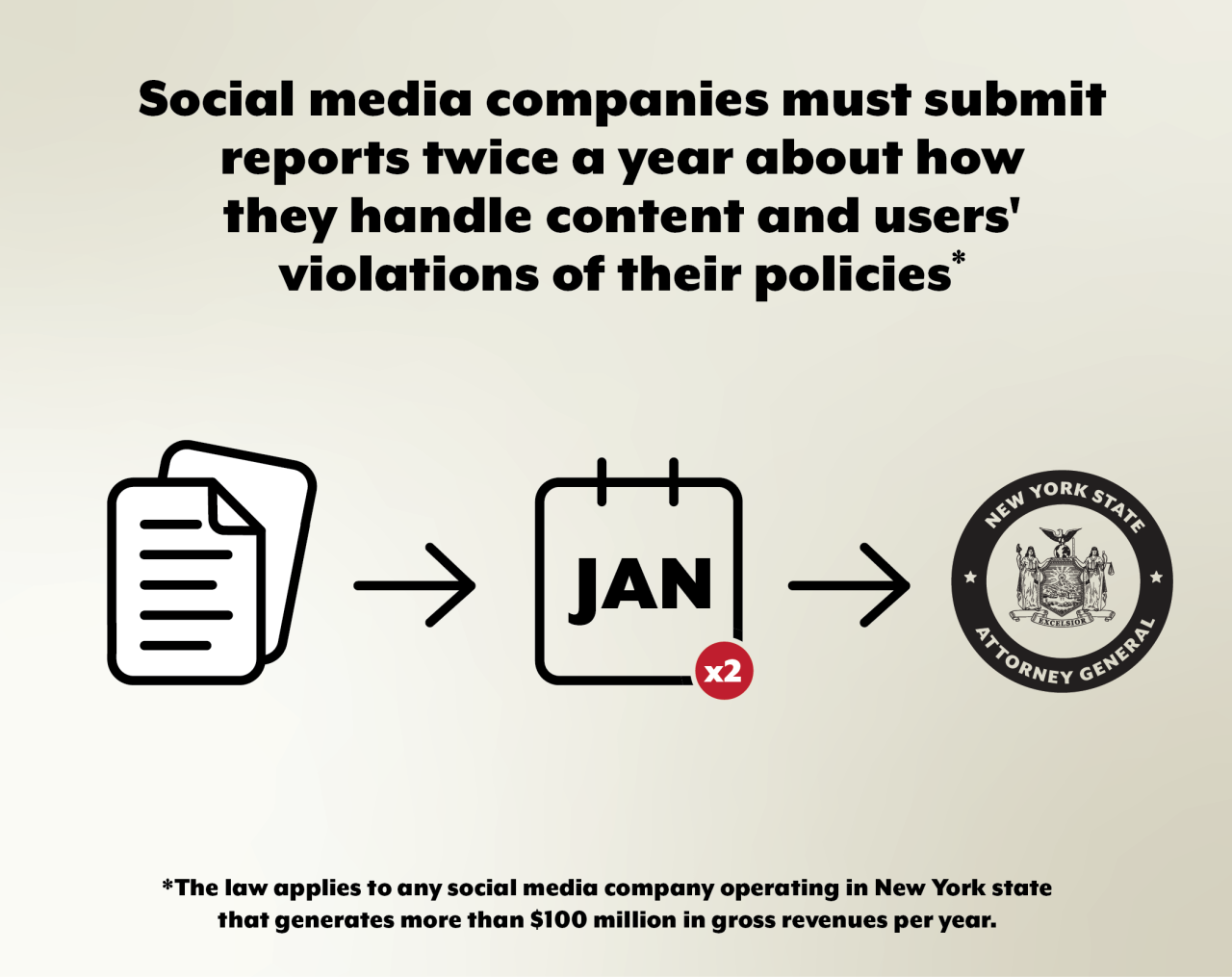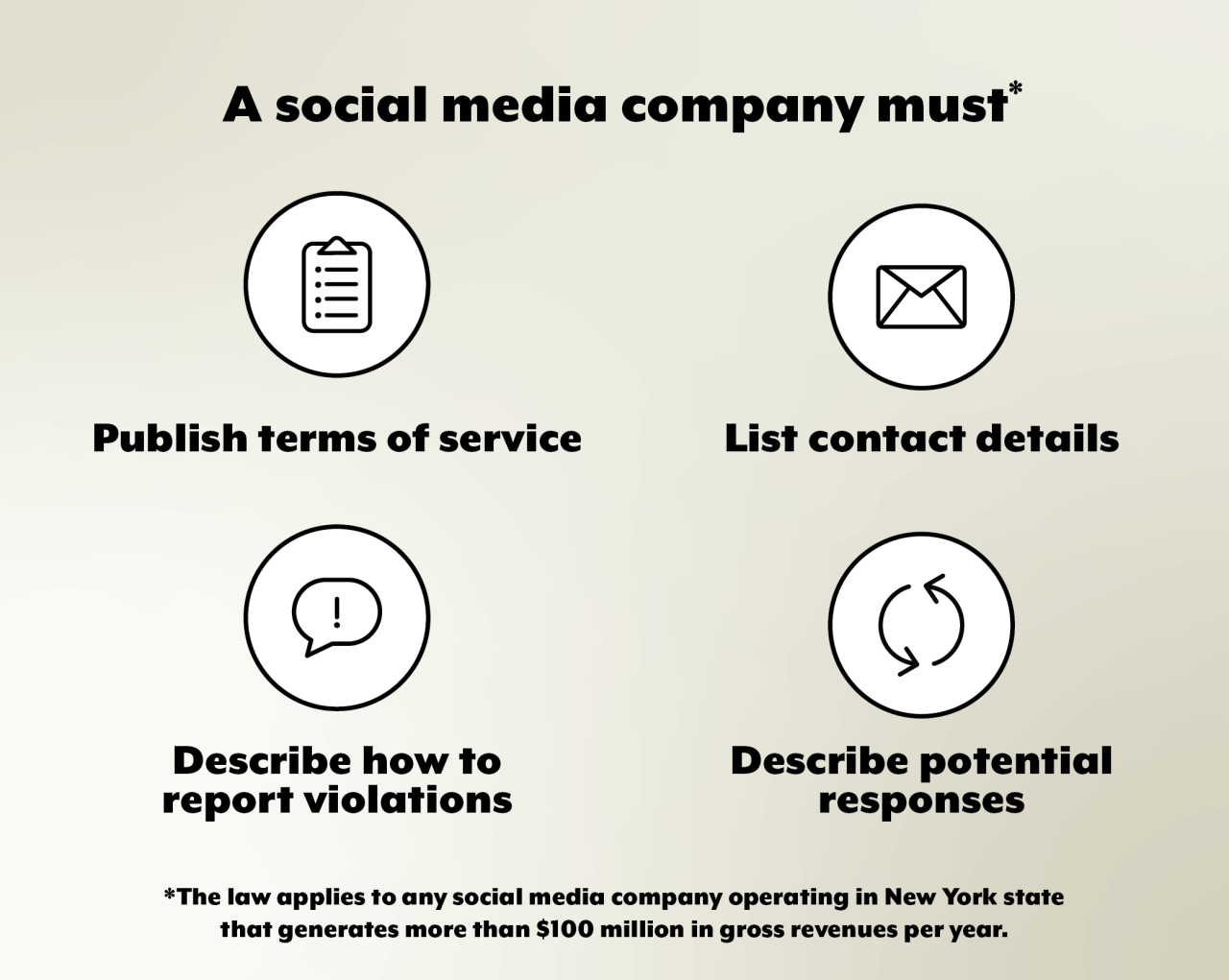Stop Hiding Hate Act
Promoting transparency in social media
What the new law does
The "Stop Hiding Hate" Act requires social media companies to be more transparent about how they handle hate speech, racism, misinformation, and other types of content. The law focuses on a company's terms of service, which describe the platform’s rules and policies for its users, the users' and platform's responsibilities, and acceptable and unacceptable user behavior.
The law applies to any social media company operating in New York state that generates more than $100 million in gross revenues per year.


A social media company must:
- report to the Office of the New York State Attorney General (OAG) twice per year about how it is handling content and users' violations of its policies
- clearly publish its terms of service in accessible language
- clearly list contact details for questions about its terms of service
- describe how users can report violations of the terms of service
- describe potential responses it may take to any violations of its terms of service
Reporting to OAG
Each social media company must submit a report about its terms of service to OAG twice each year. The law includes specifics about what these reports must contain.
These reports must include all of the following:
- the social media platform’s current terms of service
- any changes to the terms of service since the previous report
- whether the terms of service define each of the following categories of content:
- hate speech or racism
- extremism or radicalization
- disinformation or misinformation
- harassment
- foreign political interference
- a description of the platform’s practices for moderating content, including:
- how the platform’s policies address the content categories
- how automated systems are used to moderate content, and when these systems involve human review
- how the company responds when users report that someone has violated the platform’s policies
- the actions the company takes to remove individual social media posts
- the actions the company takes to remove anyone who violates the platform’s policies
In addition, the report must list the languages where the platform offers some features (such as menus or prompts), but does not provide a terms of service in that language.
In its reports, the social media company must also explain how it has responded to violations of its policy. The company must describe how it flagged violations, as well as how it took specific actions against social media posts, such as removing a post, removing the financial incentive for sharing a post (demonetizing), or lowering a post’s priority (deprioritizing).
In this part of the report, the company must list all of the following:
- total number of social media posts that the company flagged as possible violations
- total number of posts that the company took action on, and of the number of posts for which the company took action against users responsible for the content, as well as other related information
Penalties for violating the law
A company could violate the law by doing any of the following:
- failing to post its terms of service
- not submitting a required report
- filing a misleading or incomplete report
Violations
After being notified of their violation, a company has 30 days to remedy the violation before OAG imposes the civil penalties.
Social media users may contact OAG about how companies handle content moderation and violations of their policies.
